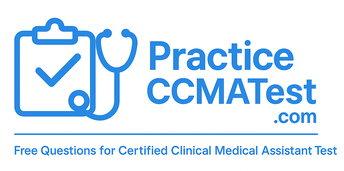Practice CCMA Test 3 contains 40 questions, providing realistic scenario-type practice. These questions are provided to take the types of decisions you may face and have to make on the exam and in real life. Throughout the question sections, you will face the same necessity of applying your knowledge, weighing options, and making choices reflective of safe and effective patient care.
40 Questions
Practice CCMA Test 3 is the time when practice involves more than simple preparation. The focus shifts from a recall mode to a judgment mode as the scenarios become increasingly realistic.
Continue recording the strategies that provide you with confidence in your answers; you will soon be practicing the CCMA Test 4 with even more complicated scenarios
Next: CCMA Practice Test 4